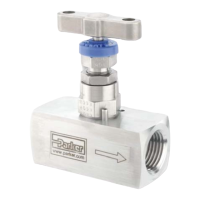AC Output Module
Solid-State
Switch
L1
AC Output Module
Solid-State
Switch
L1
Contact Output Module
L1 L2
L1L2 L2
L2
1MS
L1
1MS
1M
L2
Although the motor starter is
an inductive load, it does not
need a suppressor because it is
switched by a solid-state device.
The motor needs supressors
because it is an inductive load
switched by hard contacts.
1CR
The pilot light needs a supressor
because it is an inductive load
switched by hard contacts.
Example 1:
An AC output module
controls a motor starter
whose contacts control
the motor.
Example 2:
An AC output module
controls an interposing
relay, but the circuit can be
opened by hard contacts.
The relay contacts control
a solenoid.
Example 3:
A contact output module
controls an inductive load.
1CR
The solenoid needs a supressor
because it is an inductive load
switched by hard contacts.
The interposing relay needs a
supressor because it is an inductive
load switched by hard contacts.
Pilot Light With Built-In
Step-Down Transformer
Suppressor
Suppressor
Suppressor
1MS
1MS
L1
1S
Suppressor Suppressor
Suppressor
Industrial Automation Wiring and Grounding Guidelines E115P
13
Figure 10 – Examples of Where to Use Suppression
Figure 11 – Typical Suppression Applications
Figure 11 shows typical suppression circuitry for different
types of loads.
+–
230/460VAC
3-Phase
Motor
For 3-Phase Apparatus, a Suppressor is Needed
Across Each Phase
For Small Apparatus (Relays, Solenoids,
and Motor Starters up to Size 1)
For Large Apparatus (Contacts up to Size 5) For DC Relays
120VAC
Cat. No. 700-N24
120/240VAC
VDC
700-Nx
Electrocube 1676-13
Cat. No. 599-K04 or
599-KA04 or ITW
Paktron 104M06QC100

